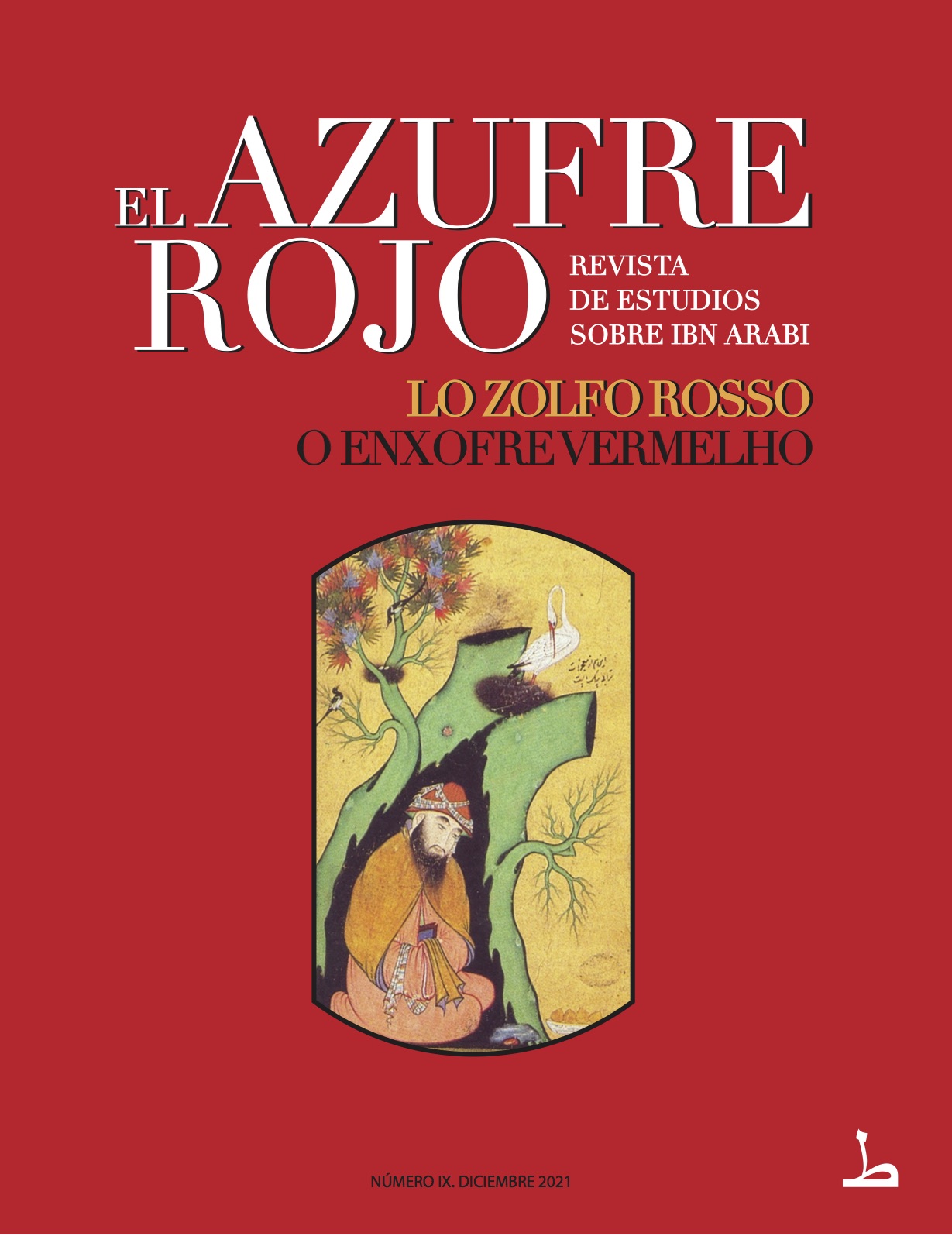IBN ʿARABῙ: RETIRO Y RECUERDO
Resumen
Resumen: El retiro se ha establecido durante mucho tiempo como un método de realización espiritual. Ibn ʿArabī escribe sobre el retiro, por un lado, como la práctica del aislamiento y, por otro, como un principio general de fuga en retorno hacia Dios, fuga desde la ignorancia hacia el conocimiento. Según Ibn ʿArabī, la dimensión interna del ser humano es la celda de su retiro. El recuerdo de Dios es una consciencia de la presencia divina y, cuando el corazón está vacío de preocupaciones mundanas, lo divino puede ser presenciado interna y externamente, en reclusión o en compañía.
Abstract: Retreat has long been established as a method of spiritual realization. Ibn ‘Arabi writes of retreat both as the practice of seclusion and as a general principle of fleeing to God, and of fleeing from ignorance to knowledge. According to Ibn ‘Arabi, the human being’s inward dimension is the cell of their retreat. The remembrance of God is an awareness of the divine presence and when the heart is empty of worldly concerns, God’s presence may be witnessed inwardly and outwardly, in seclusion or in company.
Descargas
-
Resumen387
-
pdf393
Citas
- ADDAS, Claude (1989), Ibn ʿArabī ou la quête du Soufre Rouge, París, Gallimard.
-CHITTICK, William C. (1989), The Sufi Path of Knowledge, Albany, SUNY Press. -CHODKIEWICZ, Michel (2012), Le Sceau des Saints, Prophétie et Sainteté dans la doctrine d’Ibn Arabī, París, Gallimard.
––– (2009), “Miʿrāj al-kalima: From the Risāla Qushayriyya to the Futūḥāt”, Journal of the Muhyiddin Ibn ‘Arabi Society, vol. 45, pp. 1-19.
- COLLEDGE, Edmund, y -McGINN Bernard (1981), Meister Eckhart: The Essential Sermons,Commentaries, Treatises and Defense, Londres, Classics of Western Spirituality.
- HARRIS, Rabia Terri (1981), Journey to the Lord of Power: A Sufi Manual on Retreat by Muhyiddin Ibn ‘Arabi, Londres, East-West Publications.
- IBN ʿARABĪ (sin fecha), al-Futūḥāt al-Makkiyya, (IV vols.), Beirut, Dār Sādir.
–––(sin fecha), Fuṣūṣ al-ḥikam, ed. ʿA. ʿAfīfī, Beirut y Líbano, Dār al-kitābal-ʿarabī.
––– (2009), Los engarces de las Sabidurías, trad. Andrés Guijarro, Madrid, EDAF.
––– (2004), Divine Sayings (Mishkāt al-anwār), trad. Stephen Hirtenstein y Martin Notcutt, Oxford, Anqa Publishing.
––– (1988), Les Illuminations de La Mecque, Textes choisis, ed. M. Chodkiewicz et al., París, Sindbad.
–––(1997), Iṣṭilāḥāt al-ṣūfiyya en Rasāʾil, Beirut, Dār Ṣādir, p. 529-541.Trad. al cast. de Alfonso Carmona González (1990), “Terminología Sufi (Al-Iṣṭilāḥāt aṣ-ṣūfiyya)” en Guía espiritual, pp.77-131, Murcia, Editoria Regional de Murcia; trad. al inglés de Rabia Terri Harris (1984), “Sufi Terminology: Ibn ʿArabi’s al-Iṣṭilāḥ al-Ṣūfiyyah en JMIAS, vol. III, pp.27-54.
––– (1990), Los Sufís de Andalucía, Málaga, Editorial Sirio, S.A.
––– (1979), Wird, Londres, Muhyiddin Ibn ‘Arabi Society.
––– (1979), Rūh al-quds, Damasco.
––– (1948), Ḥilyat al-abdāl, Hyderabad; trad. al cast. de Gustavo Bize (2015), “Ibn ʿArabī: El Adorno de los Substitutos (Ḥilyat al-abdāl)”, El Azufre Rojo, Número 2, pp. 124-136; trad. al ingl. de Stephen Hirtenstein, (2008), The Four Pillars of Spiritual Transformation: The Adornment of the Spiritually Transformed (Ḥilyat al-abdāl), Oxford, Anqa Publishing. trad. al franc. de Michel Vâlsan (1950), “La parure des abdāl (Ḥilyat al-abdāl)”,en Études Traditionelles, números 286-7.
- IBN SAWDAKĪN, (1973), Kitāb wasāʾil al-sāʾil, ed. M. Profitlich, Friburgo.
- LINGS, Martin (1983), Muhammad: his life based on the earliest sources, Londres, Islamic Texts Society.
- MORA, Fernando (2019), El perfume de la existencia: Sufismo y no-dualidad en Ibn ‘Arabī de Murcia, Córdoba, Editorial Almuzara,p. 286.
- RAUF, Bulent (1986), Addresses, Roberton, Beshara Publications.
- VÂLSAN, Michel (1969), “Sur la notion de la Khalwa (Ch. 78)et Sur l’abandon de la Khalwa (Ch.79): Ibn ʿArabī, Futūḥāt al-Makkiyya”, Études Traditionnelles, números 412-13, pp. 77-88.


